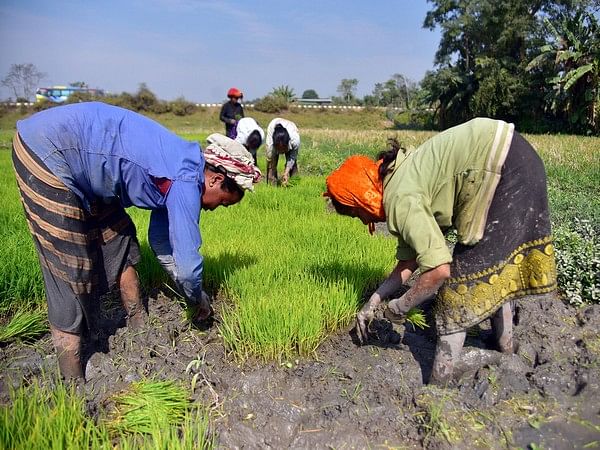New Delhi [India], August 12 (ANI): Farmers in India have sown Kharif crops across 979.89 lakh hectares so far this year, as against 966.40 lakh hectares in the same period of last year, according to the latest data from the Agriculture Ministry.
On a yearly basis, the sowing is about 1.4 per cent higher, according to the latest data from the ministry.
Commodity-wise, paddy, pulses, oilseeds, millets, and sugarcane sowing have been higher year-on-year. Sowing for cotton and jute/mesta has, on the other side, declined.
Agriculture Minister Shivraj Singh Chouhan recently said that the central government is committed to having 100 per cent procurement for Urad, Arhar and Masur in all the states as he called for generating awareness on the issue so that more and more farmers come forward for pulse cultivation.
India is a large consumer and grower of pulses and it meets a portion of its consumption needs through imports. India primarily consumes chana, Masur, urad, Kabuli chana, and tur pulses. Despite several measures, including various incentives to farmers, India is still dependent on imports of pulses for its domestic requirements. Pulses imports have almost doubled in 2023-24.
The Department of Agriculture and Farmers’ Welfare has released the progress of area coverage under kharif crops as of August 12, 2024:



India has three cropping seasons — Summer, Kharif, and Rabi. Crops that are sown during October and November and the produce harvested from January depending on maturity are Rabi. Crops sown during June-July and dependent on monsoon rains are harvested in October-November are kharif. Crops produced between Rabi and Kharif are Summer crops.
Traditionally, Indian agriculture (especially the Kharif area/output) is heavily reliant on the normal progression of monsoon rainfall. IMD in its first long-range forecast has stated the southwest monsoon (June-September) this year is expected to be above normal. Skymet, a private forecaster, has also forecast a normal monsoon this year.
India receives over 70 per cent of its overall rainfall during this southwest monsoon period. Thus, the timely and proper occurrence of monsoon rainfall holds prominence for the Indian economy, given the livelihood of nearly 45 per cent of India’s population depends on agriculture which depends on rainfall. (ANI)
This report is auto-generated from ANI news service. ThePrint holds no responsibility for its content.






